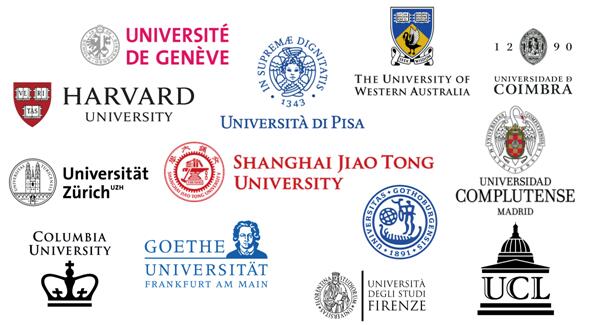Doctors from the Ninth Hospital's aid to Xinjiang still care about that hot land: a 32 year old Xinjiang patient traveled over 6000 kilometers to seek medical treatment, and after returning to Shanghai, the patient | head and neck | Xinjiang
Dr. Zhang, please help me.
In July, a Xinjiang patient came to the expert clinic of Zhang Ling, the chief physician of the Department of Oral and Maxillofacial Head and Neck Oncology at Shanghai Ninth People's Hospital. 32 year old Abudu comes from Bachu County in Kashgar region. Two months ago, he went to the local health center for treatment due to a walnut sized lump in his mouth. After several twists and turns, it was only then that I learned that there were experts from Shanghai assisting Xinjiang at the Kashgar Second Institute. The local doctor's biopsy suggests that Abudu is suffering from adenoid cystic carcinoma of the left maxilla. Due to limitations in local medical conditions, a remote video consultation was immediately conducted, and Zhang Ling, who had just returned to Shanghai three months ago and was in contact with the 10th batch of Xinjiang aid cadres, was contacted. Zhang Ling carefully read the enhanced CT of the patient's head and neck, and found that the left maxillary bone was damaged significantly, suggesting that the patient should be operated as soon as possible.
From Bachu to Shanghai, one needs to take a long-distance bus for 4 hours to reach the urban area of Kashgar, take a 12 hour train from Kashgar to Urumqi, and then fly from Urumqi for 5 hours to reach Shanghai. From west to east, spanning the entire China, covering a distance of over 6000 kilometers, one journey requires day and night. However, Abudu, who was devoted to seeking medical treatment, had no time to worry about the fatigue of the journey. On the second day of arriving in Shanghai, he rushed to Zhang Ling's expert clinic without stopping.
In this examination, it was found that the tumor was about 4 centimeters by 5 centimeters, and nearly half of the palate had been invaded by the tumor. The patient had also developed corresponding areas of pain and numbness. Zhang Ling immediately contacted the ward, coordinated the beds, opened a green admission channel for Abudujia, and consulted with relevant departments to discuss the patient's condition.
Considering the young age of the patient, if the tumor is simply removed without repair and reconstruction, although the surgical time is shortened, it is difficult to remove and wear the prosthesis. The patient may experience facial collapse, malocclusion, and disrupted occlusal relationships after surgery, which seriously affects their normal life and greatly reduces their postoperative quality of life. To this end, Zhang Ling led a team to design a surgical plan in order for patients to reintegrate into society and return to a dignified life after surgery.
After admission, the patient underwent relevant examinations and the surgery was successfully completed within 8 hours. Although it was already late at night, looking at the patient's almost unchanged facial shape and the maximum preserved anatomical function, all the fatigue was swept away. After surgery, Abudu recovered well and was hospitalized for 10 days, fully recovered and discharged. What's even more gratifying is that in the later stage of diagnosis and treatment, patients no longer need to go through such a long journey. Through the remote consultation model established by Shanghai's aid to Xinjiang, they can complete follow-up and follow-up through video in Kashgar. When leaving the hospital, Abudu repeatedly said "Yaxi" and expressed gratitude to Zhang Ling. At that moment, although the language was not compatible, the emotions of the same Chinese bloodline crossed the barrier of words and infected everyone present.
As the 10th batch of Shanghai's targeted aid to Xinjiang cadres, Zhang Ling has received over 2000 patients and led colleagues in the department to carry out more than 1500 head and neck surgeries, including more than 300 third and fourth level surgeries, in the past two years. He has filled multiple gaps in oral, maxillofacial, and head and neck tumor surgeries in southern Xinjiang, not only serving patients in southern Xinjiang, but also attracting many patients from northern Xinjiang and even outside Xinjiang. Through more than 20 months of guidance, three ethnic doctors have been able to independently complete routine head and neck surgery.
It is reported that Shanghai Ninth People's Hospital has been participating in targeted support for Kashgar Second Hospital for 10 years. We have made outstanding efforts to build a medical highland in southern Xinjiang and cultivate local medical talents, driving the construction of disciplines such as oral and maxillofacial surgery, general surgery, ear, nose, throat, head and neck surgery in the local area. At the same time, we have also laid a solid foundation for the construction of a modern hospital management system in Kashgar Second Hospital and the successful promotion to a tertiary Grade A hospital. It has been over three months since returning to Shanghai's busy clinical work, but Zhang Ling still cares about the patients in Kashgar and the hot land. "As a Party member, defending the country and borders, and nurturing the masses in return are responsibilities, and even more so, responsibilities. The spirit of serving the motherland and the people in aiding Xinjiang has always inspired me to constantly strive in my future medical work."




